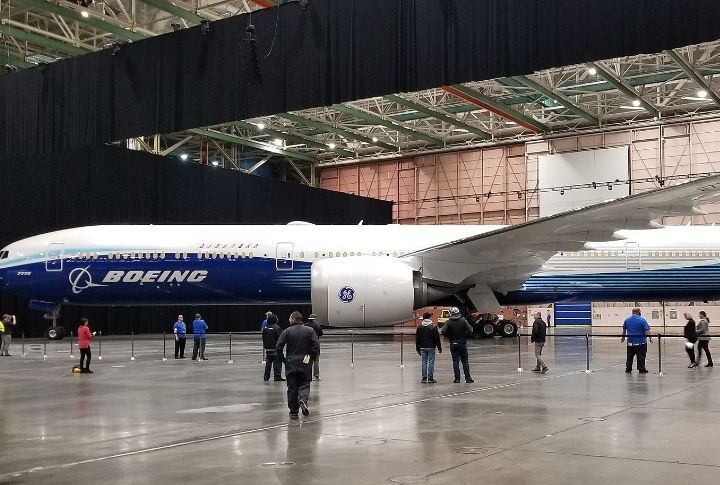
Discover Boeing’s Game-Changer: The 777X with Folding Wingtips

Boeing’s 777X is not just another airplane; with its unique folding wingtips, it’s a revolutionary step in aviation. Curious why this plane needs such a feature? Imagine trying to fit a massive aircraft into a standard airport gate—not an easy task! This listicle will break down the reasons behind the innovative design and what it means for the future of air travel.
The Groundbreaking 777X

Boeing’s 777X is the first commercial plane to feature folding wingtips. This innovation is a significant leap in aviation technology, designed to help the aircraft fit into standard airport gates while keeping large wings for better flight efficiency. It’s like having the best of both worlds.
Need for Folding Wingtips

Why do the 777X’s wingtips need to fold? Standard gates can’t accommodate the 777X’s massive wingspan, so Boeing engineered a way to make the wings shorter when on the ground. This allows the plane to fit into existing infrastructure without requiring costly modifications.
High Demand and Major Customers

The 777X is already a hot ticket, attracting 481 orders from major airlines, including big names like British Airways, Emirates, and Lufthansa. These carriers are eager to add this state-of-the-art airplane to their fleets, which speaks volumes about its anticipated performance and efficiency.
Boeing’s Vision at the Dubai Airshow

The 777X was unveiled at the Dubai Airshow in 2013. The next-gen widebody was presented as a bigger, more efficient successor to the 777-300ER. With this advanced model, Boeing aimed to outdo its competitor, the Airbus A350.
Challenges and Delays

Initially expected to be certified by 2020, the 777X faced multiple delays. Design flaws, supply chain issues, and the pandemic have pushed the certification timeline to 2025. Despite these setbacks, airlines remain optimistic about the plane’s potential to revolutionize long-haul travel.
Emirates’ Significant Investment

Emirates is all-in, with a whopping 205 planes on order. Although certification hiccups have been frustrating, Emirates’ president remains confident in the aircraft’s future. The 777X is seen as a vital part of the airline’s future.
Variants and Capacity

The 777X has two passenger variants, the 777-9 and the 777-8, which can carry up to 426 and 384 passengers, respectively. A freighter option, the 777F, will also cater to cargo needs. Such versatility makes the 777X a valuable asset for airlines looking to modernize their planes.
Familiarity and Extensive Testing

One of the 777X’s key advantages is its operational similarity to the classic 777, making pilot training and regulatory certification smoother and more cost-effective. Boeing has employed four experimental 777X planes for rigorous testing, logging thousands of hours in over 1,000 test flights.
Military-Inspired Folding Wingtips and Airport Compatibility

The 777X’s folding wingtips are a first in commercial aviation but have roots in military aircraft design. When folded, the wingtips reduce the wingspan from 235 feet to 212 feet, ensuring compatibility with any airport that handles current 777 models.
Powerful GE9X Engines

Get this: The 777X is powered by the General Electric GE9X engines, the most powerful ever made for a commercial airliner. Generating over 100,000 pounds of thrust, these engines give the plane amazing efficiency and range.
Enhanced Passenger Experience

Comfort and innovation go hand-in-hand with the 777X’s design, which promises a superior flying experience for travelers. It has a wider cabin, making 10-abreast seating more spacious. Plus, passengers will enjoy larger windows that can be dimmed to unprecedented levels of darkness.
The Competitive Edge

Even with some production challenges, the 777X’s size and efficiency make it a strong contender against the Airbus A350. Airlines in the Middle East are counting on the 777X to replace older aircraft and enhance their hub-and-spoke networks.


